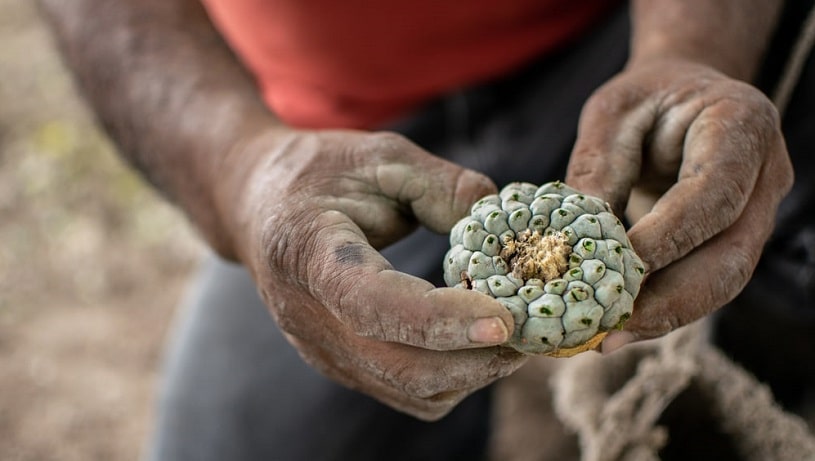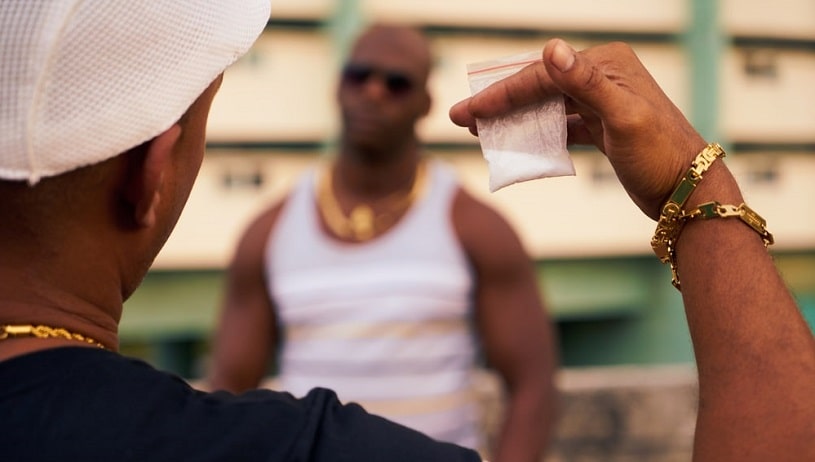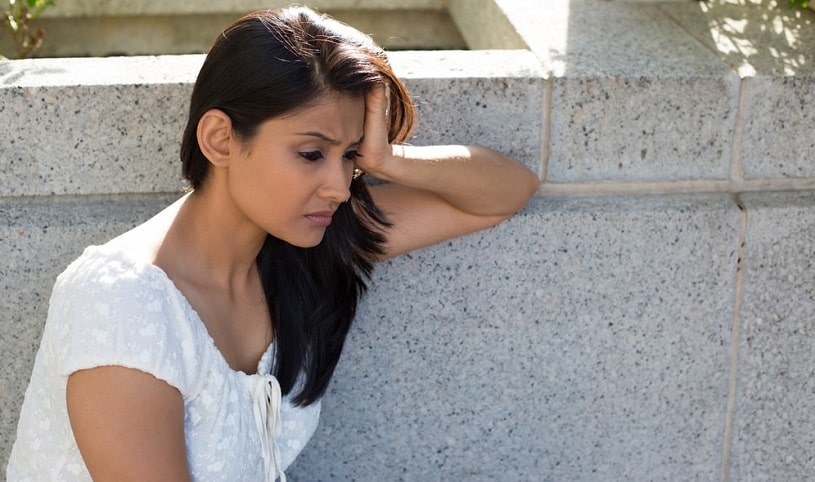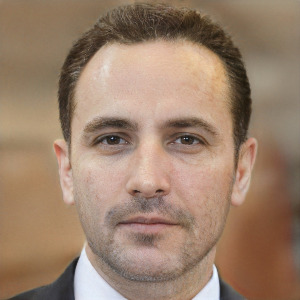Native Americans (also known as American Indians and paired with Alaska Natives) make up a small minority of the US population. Still, Native American drug use is more prevalent than other groups. In 2013, the National Survey on Drug Use and Health (NSDUH) estimated that among Americans over the age of 12, 23.6 million abused or were dependent on drugs or alcohol.
Table Of Contents:
- What Are the Statistics on Drug Abuse Among Native Americans?
- What Is Important to Know About African-American Substance Use?
- What Are the Drug Trends Among Latino Populations?
- What Are the Important Aspects of Substance Use in Asian-Americans and Pacific Islanders?
- What Is Asian Alcohol Intolerance?
- Which Substance Use Treatment Providers Are Open to Minorities?
- What Are the Various Types of Addiction Treatment?

Because of cultural differences, different ethnic or racial groups may view addiction differently, making it more challenging to treat. They may also lean towards different drugs as a result, as despite the high prevalence of drug use, Native American alcoholism rates are not commensurately high.
Native American drug abuse is a particularly big problem. However, one thing to consider is that addiction is “color-blind.” It touches anyone the same way, given the right conditions. The differences occur primarily due to genetic differences, historical factors, housing conditions, income differences, sheer coincidence, or straight-up racism.
This article will discuss drug use amongst various minorities, Asian alcohol intolerance, and how to get help for these problems.
Native American Drug Abuse
As of 2019, it was estimated that there were 5.7 million Native Americans in the United States, which accounts for 1.7% of the country’s population. It makes them one of the smallest minorities in the country.
Based on the 2018 National Survey on Drug Use and Health (NSDUH), the research study provided the following info on Native American drug abuse:
- Illicit Drugs: 28.35% of the American Indian population sampled stated to have abused any illicit drug in the previous month. This is more than double the national average of 2018, at 13.19%, and the highest among any minority.
- Binge Drinking: Surprisingly, the prevalence of binge drinking among Native Americans was lower, at 17.34%, compared to a national rate of 21.74%.
- Alcohol use: The rate of alcohol use among young members of this demographic (12 to 17 years of age) was 5.0%, which was lower than the previous years and lower than the national average by nearly half. However, Native American alcoholism rates are 10.3% in those between 18 and 25 and 7.2% in those older than 26, which is higher than 5.1%, the country average.
- Prescription medicine: 5.8% of this population admitted to misusing opioids in the past year.
- Native American substance abuse rates were 9.1% compared to the national average of 10.8% in the same year. This is the highest among any minority. Marijuana and psychoactive drugs are the most-used substances.
What Leads to Native American Substance Abuse?
Due to the different societal and cultural issues they face, Native American drug abuse is more prominent than other minorities. Many factors can contribute to this problematic issue for this group.
These Include the Following:
- Racism
- High unemployment rates
- Traumatic historical experiences
- Poverty
- Poor access to health care
- Violence
- High school dropout rates
In many instances, a combination of these factors comes together to predispose them to drug use. It contributes significantly to the Native American drug use problem.
In addition, the traditional religious use of peyote and as a medicine is an important part of their culture. However, the illegality of the drug may have contributed to the use of other drugs, such as marijuana, to take the place of the psychedelic effects of peyote.
What Are the Most Popularly Used Native American Drugs?
For years, Native Americans have used psychedelic and psychoactive effects of some substances for religious purposes and as medicine. Peyote is one of the most popular of these Native American drugs. However, despite its use in religious ceremonies as a medicine for years, peyote is a Schedule I controlled substance according to Drug Enforcement Agency regulations, though the Native American Church is exempt.
While the Native American drug peyote is still used, the major impact of drug use is from other psychoactive substances. However, a study found that the use of marijuana or alcohol in the previous month was likely to be accompanied by peyote use, whether for religious or recreational purposes.

The most used drug among American Indian and Alaska Native populations is marijuana, with more than a fifth (23.0%) of the over-12 population admitting to using it in the last year.
Psychotherapeutic drugs are the second most used Native American drug, at 7.6% – significantly less than cannabis. It includes drugs used to treat psychological conditions, such as mood stabilizers, antidepressants, and others. Prescription opioids are abused to a significant extent.
Among Native American drugs, methamphetamines have been a well-documented problem for years. The rate of use in the last year was placed at 2.4% of the population. It is the second-highest rate of abuse among an ethnic demographic in the United States.
Other drugs like cocaine and hallucinogens (the psychedelic peyote likely accounting for most of this category) are used in relatively significant amounts, though religious use may contribute to this. On the other hand, inhalants and heroin are used much less than other Native American drugs.
Finally, and interestingly enough, while alcohol use in the previous month was less than the US average, the Native American alcoholism rates are higher than the average.
What Prevents Native Americans from Getting Treatment?
While an American Indian or Alaska Native who requires substance use treatment is more likely to get it than other ethnicities, the high prevalence of Native American substance abuse makes it such that a disproportionately large number are still left untreated.
Several things lead to their difficulty in getting treatment. First off, transportation from their reserves and communities may be challenging across the different states. Most of these people’s lack of health insurance also presents difficulty in accessing health care, especially specialist care for drug addiction and abuse.
Finally, poverty and a lack of centers in their community capable of treating substance use disorders appropriately complicate issues.
Also, it can be thought that the large proportion of Native Americans dealing with substance abuse has normalized the condition in a sense. Native American drug problems may no longer seem like an emergency worth treating at the very soonest when it is so prevalent in the community, which is a situation that has to be stopped from settling in.
African Americans
As of 2019, there were 41.1 million African Americans in the US, accounting for 12.4% of the population. According to the National Survey on Drug Use and Health (NSDUH):
- The rate of marijuana use by African Americans ages 12 and older during the past month was 17.8%. The national average was 15.9%
- Binge drinking (drinking more than four drinks on a single occasion) by African Americans ages 12 and older was 21.6%, slightly lower than the national average of 23%
- Alcohol use among young African Americans (ages 12 and older) was 32.1%, compared to the national average of 55.1%
- Underage binge drinking during the past month was 8.5% among African American youth (ages 12 to 20) compared to the national average of 13.8%
There are many factors that may increase African Americans’ vulnerability to drug and alcohol abuse.
These Include:
- Mental Illness
- Access to drugs
- Trauma
- Poverty and homelessness
- Racism
What Drugs are Used Among African Americans?
Although African Americans experience a lower incidence of binge drinking and alcoholism than other ethnic groups, those who become alcoholics are more severely addicted and suffer a more significant number of drinking-related problems.
The number of African Americans seeking treatment for cocaine addiction has declined over the last several decades. However, they are still twice as likely as other groups to seek treatment for cocaine addiction.
Crack cocaine is cocaine that is treated with baking soda or ammonia, resulting in a rock form that is smoked. Crack cocaine is cheaper and far more addictive than cocaine. African Americans have a higher incidence of crack cocaine use than whites or Hispanics. In addition, African Americans who use heroin by injection are more likely than Caucasians to also use crack cocaine.

Often used as a form of self-medication, almost 75% of African Americans who suffer from depression abuse marijuana. In addition, young African Americans are more likely than their white peers to see drugs sold and perceive marijuana as easy to get.
What Prevents African Americans from Getting Treatment?
Those affected by substance abuse in the African American community may be less likely than other ethnicities to seek substance abuse treatment for several reasons. These reasons include failure to recognize the signs of addiction, stigma, distrust, lack of available childcare, cost, and not knowing what services are available.
Failure to recognize the symptoms of substance abuse spans all cultural groups. Addicts and those closest to them may know that a problem exists, but they may minimize the seriousness of the situation or simply ignore it.
Hispanic Americans/Latinos
Hispanic Americans number 60 million in the US, comprising about 18% of the total population. By 2050, the Latino population in the US is expected to reach 132.8 million, or about 30% of the total population.
Data From the 2015 National Survey on Drug Use and Health Shows That Among Hispanic Americans:
- The rate of illicit drug use during the past month for Hispanic Americans ages 12 and older was 8.9%, compared to the national average of 10.2%
- The rate of binge drinking among Hispanic Americans ages 12 and older was 24.7%
- Alcohol use among Latinos ages 12 to 17 during the preceding year was 23.9%
Addiction may have a genetic cause, and those with a family history of addiction can be at increased risk of developing substance abuse. Hispanic Americans who abuse drugs are very likely to have co-occurring depression or anxiety.
Studies have also demonstrated that young Hispanic Americans are more likely to use illicit drugs than their non-Hispanic counterparts. Studies have also shown that unmarried Hispanic Americans are more likely to use drugs than their married counterparts.
Being exposed to the stress of unemployment and poverty has been linked to increased alcohol abuse among Latinos. In addition, several studies have linked exposure to traumatic or violent events and drug abuse with Hispanic Americans.
What Drugs are Used?
Statistics demonstrate that Latinos may be more likely to use or abuse certain substances than the national average.
These Include:
- Alcohol. Many Hispanic Americans do not drink alcohol, but among those who do, Hispanic Americans use alcohol to a greater degree than do non-Hispanic Americans.
- Marijuana. Young Hispanic Americans are more likely to use marijuana. A 2011 study reported that 50% of Hispanic American teens self-reported using marijuana in the past year. Only 35% of white teens and 40% of black teens had used the drug in the same period.
- Opioids. According to SAMSHA, Hispanic American men and women were more likely to seek treatment for opioid abuse (heroin or prescription painkillers) than were non-Hispanic Americans.
- Cocaine. The use of cocaine in the Hispanic American community differs by ethnicity. Puerto Rican men and women were more likely to use the drug than Cuban or Mexican Americans.
What Prevents Hispanic Americans from Getting Treatment?
Many barriers to gaining access to treatment in the Hispanic American community are similar to those of other ethnic and racial groups, with a few exceptions.
Many Hispanic Americans view access to rehabilitation services as difficult to access. Lack of access may be as simple as a language barrier, or they may lack financial resources. According to Henry J. Kaiser Family Foundation, young Hispanic Americans are more likely to be uninsured than other ethnic or racial groups.
The lack of Hispanic providers (or those who are culturally competent) may make Latinos who need treatment uncomfortable. It is more than just a language barrier, as many bilingual health service providers are not culturally competent. The language barrier may also be an issue with support groups. Hispanic Americans also rely on a huge network of extended family for many aspects of their lives, including health care decisions. When treatment providers are not culturally competent, they may not understand the importance of extended family in Hispanic American culture and may put off patients’ receiving treatment.

There are many places for Hispanic Americans to receive help with substance abuse problems. Two resources are SAMHSA and The National Latino Behavioral Health Association.
Asian Americans and Pacific Islanders
Pacific Islanders and Asian Americans suffer lower rates of substance abuse than other minority populations. It has given them the stereotype of a “model minority.” This stereotype (as with all stereotypes) does the group a great disservice as it minimizes their problems as a community. Asian Americans, as a group, are less likely to seek professional help when they need it. They may feel shame about their addiction and may not have access to culturally competent care.
As of 2020, there were about 18.6 million Asian Americans and 1.4 million Native Hawaiians or Other Pacific Islanders (NHOPIs) in the US. According to the US Census, Asian Americans are the fastest-growing racial group in the country.
Some Substance Abuse Statistics Among Asian Americans and Nhopis in 2014:
- Among people ages 12 and older, the rate of illicit drug use in the preceding month was 4.1% among Asian Americans and 15.6% among NHOPIs.
- Binge alcohol drinking among Asian Americans ages 12 and older was 14.5% and 18.3% among NHOPIs.
- Binge drinking in the preceding month for Asian Americans was 6.7%, compared with the national average of 13.8%.
- The rate of substance addiction was 4.5% for Asian Americans and 10% for NHOPIs.
Why do Asian Americans/Pacific Islanders Use Drugs?
Asian Americans and Pacific Islanders may become dependent on drugs for many reasons, including:
- History of trauma. Many Asian Americans may have been exposed to trauma in their native countries. Torture, war, and separation from family members are not uncommon. Trauma can lead to Post Traumatic Stress Disorder (PTSD) which often manifests itself in the form of anxiety and depression. Many people who suffer PTSD self-medicate with alcohol or other illicit drugs.
- Acculturation. Adopting a new culture and language can be stressful for individuals in many ways. Shifting attitudes and cultural values can cause stress in families because not all members acculturate to the same degree or at the same time. It contributes to tobacco and alcohol use and can also lead to problematic gambling.
- Mental illness. Asian Americans are not less likely than other ethnic groups to suffer from mental illness. Still, they are more likely to exhibit somatic complaints (stomach distress, headaches) than to talk about what is bothering them. As with other cultural/racial groups, Asian Americans may use drugs and alcohol to self-medicate.
- Poverty. Asian American families may live in poverty due to a lack of education and limited job opportunities for immigrants. It can result in intergenerational stress, and adolescents may experiment with drugs and alcohol.
- Racism. Asian Americans who have been the victims of racism are more likely to become alcoholics than those who have not.
- Separation from family. Parents play a crucial role in determining whether their children will experiment with illicit drugs and alcohol. Asian American children whose parents communicate their disapproval of drug and alcohol use are far less likely to use alcohol and drugs. Children who have been separated from their parents due to immigration, war, or any other reason are at higher risk of using drugs and alcohol.
What Prevents Asian Americans/Pacific Islanders from Getting Treatment?
Asian Americans who need treatment for drug addiction face similar barriers as other minority groups do. For example, Asian cultures are acutely aware of personal and family honor. In addition, many Asian Americans view drug addiction and alcoholism as moral weaknesses. Those who are not fluent in English are more likely to seek help if services are available in their native language.
Poverty or lack of insurance may deter many Asian Americans from seeking treatment.
Moreover, many Asian Americans are unaware of the symptoms of addiction. As a result, they may seek medical treatment for the physical symptoms of substance abuse rather than addiction treatment.
In conclusion, as with other ethnic groups, many substance abuse treatment programs may not be familiar with Asian Americans’ attitudes toward addiction or their values and beliefs. As well, many providers are unfamiliar with non-Western approaches to healthcare.
Who Can Help?
The Asian Community Mental Health Services (ACMHS) is an advocacy group that empowers the most vulnerable members of the Asian American community to lead healthy lives by ensuring that multicultural and multilingual services are available to them. ACMHS offers treatment services, mental health care, wellness care, and community outreach.
The Asian Counseling and Referral Services (ACRS) provides multilingual and multicultural programs for Asian Americans and Pacific Islanders by providing addiction treatment, mental health care, care for the aging, Childhelp development, citizenship assistance, and employment training and services.
Asian Alcohol Intolerance
Individuals of Asian origin, particularly East Asians, have a genetic alcohol intolerance known as Asian alcohol intolerance. It is mainly characterized by what is known as the alcohol flush reaction or Asian flush. It’s a reddening of the face that occurs following alcohol consumption in individuals predisposed to it.
Research has shown the mechanism behind this reaction to be the fact that many Asians have a deficiency of an enzyme known as aldehyde dehydrogenase. This enzyme is meant to break down acetaldehyde, a byproduct of alcohol breakdown. However, due to the deficiency, acetaldehyde builds up, causing these symptoms and others, such as nausea and headaches, leading to general Asian alcohol intolerance.
These near-immediate effects of alcohol consumption are closely associated with lower alcohol use disorder rates in Asians than other races and ethnicities. Only 0.5% of participants in the 2020 NSDUH study admitted to having abused alcohol in the previous year, which is much lower than any other ethnicity or race, which provides an easy link for research to peg Asian alcohol intolerance as a culpable factor.
Culturally Competent Treatment Providers
Culturally sensitive treatment has often been associated with better outcomes for the treatment of substance abuse and other health issues. Successful treatment of Native American substance abuse and other minorities should consider their internal realities and understand how their community works.

There are other services that these communities may also benefit from in conjunction with substance abuse treatment. These services help alleviate stress in the patients’ lives, supporting recovery and preventing relapse. For example, employment assistance and job training can help to provide financial stability, and housing assistance can help to alleviate homelessness, both major sources of stress that may have led to drug dependence in the first place.
As with finding any healthcare provider, a little legwork is necessary. Therefore, it is always good to ask questions and do some online and offline research.
Kinds of Addiction Treatment
Depending on the stage of recovery (and the extent of substance dependence), there are several different kinds of addiction treatment.
Detoxification treatment programs are necessary for patients who have withdrawal symptoms. Withdrawal occurs when a person stops using the addictive substance they have become dependent on. Withdrawal can range from unpleasant to life-threatening. During detox, medical professionals monitor the patient and their symptoms until the substance has been eliminated from their body.
Inpatient treatment programs help patients in the early stages of recovery. Inpatient detoxification programs allow patients to withdraw from drugs and alcohol in a safe, controlled, medically monitored environment. It reduces the possibility of a dangerous withdrawal. Inpatient programs also offer a drug-free environment, counseling, therapy, support groups, and other services and amenities (such as exercise classes, yoga classes, and spirituality classes) to help patients recover.
Outpatient treatment programs offer therapy sessions (group or individual). They are often helpful for patients who have completed an inpatient treatment program and are further along the road to recovery.
Twelve-step programs such as Alcoholics Anonymous (AA) and Narcotics Anonymous (NA) were founded on the philosophy that recovering addicts can help one another in a safe environment by sharing their experiences.
Seek Help For Drug Use
As a minority in the United States, many societal and cultural challenges may increase the risk of abusing alcohol and drugs.
There are many Native American drugs abused by a large proportion of the population. However, many culturally competent treatment centers for drug addiction and abuse are ready to help. So start the journey to a healthier life today.
Hope Without Commitment
Find the best treatment options. Call our free and confidential helpline
Most private insurances accepted
Page Sources
- U.S. Department of Health and Human Services Office of Minority Health, Profile: American Indian/Alaska Native, 2020, https://www.minorityhealth.hhs.gov/omh/browse.aspx?lvl=3&lvlid=62
- United States Drug Enforcement Agency, Drug Fact Sheet: Peyote & Mescaline, 2020, https://www.dea.gov/sites/default/files/2020-06/Peyote%20and%20Mescaline-2020_0.pdf
- Substance Abuse and Mental Health Services Administration, 2018 National Survey on Drug Use and Health: African Americans, 2018. https://www.samhsa.gov/data/sites/default/files/reports/rpt23247/2_AfricanAmerican_2020_01_14_508.pdf
- Substance Abuse and Mental Health Services Administration, 2018 National Survey on Drug Use and Health: American Indians and Alaska Natives (AI/ANs), 2018, https://www.samhsa.gov/data/sites/default/files/reports/rpt23246/1_AIAN_2020_01_14_508.pdf
- The NSDUH Report, Need for and Receipt of Substance Use Treatment among American Indians or Alaska Natives, 2012, https://www.samhsa.gov/data/sites/default/files/NSDUH120/NSDUH120/SR120-treatment-need-AIAN.htm
- Prince, M. A., O'Donnell, M. B., Stanley, L. R., & Swaim, R. C. (2019). Examination of Recreational and Spiritual Peyote Use Among American Indian Youth. Journal of studies on alcohol and drugs, 80(3), 366–370. https://www.ncbi.nlm.nih.gov/pmc/articles/PMC6614926/
- Dickerson, D. L., Spear, S., Marinelli-Casey, P., Rawson, R., Li, L., & Hser, Y. I. (2011). American indians/alaska natives and substance abuse treatment outcomes: positive signs and continuing challenges. Journal of addictive diseases, 30(1), 63–74. https://www.ncbi.nlm.nih.gov/pmc/articles/PMC3042549/
- Wall, T. L., & Ehlers, C. L. (1995). Genetic Influences Affecting Alcohol Use Among Asians. Alcohol health and research world, 19(3), 184–189. https://www.ncbi.nlm.nih.gov/pmc/articles/PMC6875758/

 Authored by
Authored by  Reviewed by
Reviewed by 